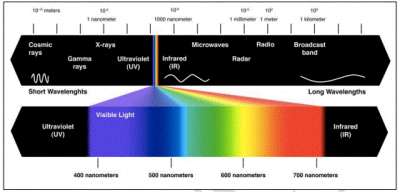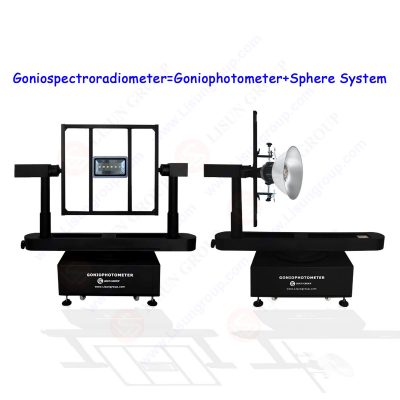1.Light formation
1.1 Introduction
Light formation refers to the formation process of organ form structure in the plant life cycle; optical aspirations refer to the process of plant growth, development and differentiation under the conditions of light. This process occurs at any period of plant growth, from germination, nutritional growth, reproductive growth to aging death, and each stage must accept the regulation of light signals. Optical will indirectly affect plant photosynthesis.
The spectral range contained in sunlight is extremely wide, but it can be used as a optical signal regulating plant growth. The proportion of plant growth is very small. Mccree is equal to the photosynthetic effects of 22 common plants in the growth room and different light conditions in the field. The light range that affects the growth of plant growth is 400nm-700nm, and this spectrum is defined as photosyntic activity Radition(PAR).
In recent years, with the continuous development of plant photosynthetic systems and photochemical receptors, based on the effective radiation of photosynthesis, the plant function spectrum has also been richer. According to the 2017 American Agricultural and Biological Engineering Society, the “OUANTITIES and Units of Electromugnctie Radition for Plants Photosynthetic Organgisms. In addition to the previously used photosynthesis (400nm-700nm), the middle wave ultraviolet rays, long wave UV rays, and long red light are also included in the plant function spectrum, which clearly specifies various types of various. The effective range of light quality. Therefore, in the currently focusing on the plant function spectrum, the band range is expanded to 280m-800mm, as shown in Figure 1, including medium ultraviolet (280nm-315nm), near ultraviolet rays (315nm-400nm), Blu-ray band (400nm-500nm) , Yellow-green light wave band (500nm-600nm), red light wave section (600m-700m), and far red light wave section (700m-800nm).

Figure 1 The location of the plant action spectrum in the solar spectrum and the simple classification
Plants light signal through a series of photoresses, and the light stimulates the photoretical body in the plant, and a series of changes such as transmission, signal amplification, gene expression, protein synthesis, and cell metabolism are affected through certain signal. For light in different bands, the light receptor of the plant receiving signals is different. At present, more studies have been determined that more studies include UVR8, Cryptochromes, Phototropins, ZTL gene families, and Phytochromes scope.

Figure 2 UVR8, Cryptochromes, Phototropins, ZTL gene families, and Phytochromes scope.
1.2 Light cycle
In addition to the energy to provide photosynthesis to plants, the optical cycle is also an important signalist to regulate plant growth. For example, seed germination, flowering, and fruit maturity are adjusted by light time, and the response of plants to periodic lighting time (especially the length of the night dark period) is called the periodic periodic phenomenon of plants. The light cycle is an important light signal that plants can judge seasonal changes and regulate their own growth cycle.
What is the light cycle?
The light cycle refers to the perception and response of the changes in the light and long -term and short -term and short -term and short -term alternative changes in the day and night cycle. Plants in nature regulate their development stages by feeling the changes in external light cycles. For example, some plants need to go through a certain light cycle to form flower buds, which reflects the results of plants in different geographical plants to adapt to the climate and environment.
Humans have already noticed that the flowering time of a variety of plants is relatively stable, but the role of the light cycle in determining the flowering period did not understand until the 20th century. In 1912, J. Turnova from France who found that marijuana will bloom under short -day photos of 6 hours a day, but under the long -term photos, it stays in the nutrition growth stage. In 1913, G.A. Clebes,from Germany who found an artificial extension of the light cycle, which enabled the Sempervivum of Changchun (Sempervivum) in June to bloom in winter.
But it is clearly stated that the theory of light cycles is W.W.GAMER and H.A.ALARD. They discovered in 1920 that the nicotia-natabacumcy that bloomed normally in the south of the United States was moved to the northern American cultivation, and only long leaves did not bloom in summer: but if they moved into the greenhouse in autumn and winter, they could bloom and sturdy. In the northern summer, the lighting method is often used to shorten the sunlight to less than 14 hours a day, and it can also make it flowering. In the future, it is found that the soybean (Biloxi), the auro, and the sorghum also have this phenomenon, and each has its own daily length limit. The sunshine length is shorter than this value. It is said that the length of the day is a critical day long. At the same time, it is found that spinach and other plants are opposite, and the length of the sunshine must exceed a certain critical day to bloom.
Many plants have a clear limit on the length of the limit, that is, the critical day length. The blooming of the long -day plants needs to be longer than a critical day, that is, the dark period is shorter than a critical value: the short -day plant requires shorter than a critical day long. The critical day here is not one-12h, but the light cycle characteristics of the plant.
2. Key plant growth index based on light response
2.1 Plants Form
2.1.1 height of plant
The height of the plant refers to the distance from the neck to the top of the plant, and the top is the top of the main stem: the ability to evaluate the vertical growth of the plant. Measure the height of the tape measure or a ruler.
2.1.2 stem thick
Stem thickness refers to the average of the vertical and horizontal diameter of the thickest stems in the base of the base: it is used to evaluate the degree of robustness of plant growth. The larger the stems, the more conducive to increasing the transportation capacity of the material in the plant. Use the diameter of the stem base with a cricket card, and the reading is thick stems.
2.1.3 Point spacing
The spacing refers to the length between the vertical stem and the interval: under normal circumstances, the spacing indicator can be used as a basis for a long judgment of the plant. In the group cultivation seedlings, the length of the interval and the height of the plant can reflect the expansion coefficient of the group cultivation.
2.1.4 wieght of leaf
The weight of the leaf refers to the weight of the leaf area of the unit (dry or fresh), which is usually represented by dry weight. Unit: g/cm2. Big leaves are a parameter that measures the performance of leaf optical synthesis. The countdown is called the leaf area.
2.1.5 crown ratio
The root crown ratio refers to the proportion of fresh or dry weights of the ground underground and above the ground. It reflects the correlation between plants and parts on the ground. The upper part of the plant is dependent on and compete with each other. The above -ground parts perform photosynthetic effects to provide nutrients for underground services. The underground part also provides water, mineral elements, and excitement. The coordination of the above -ground and underground to promote the healthy growth of plant.
Test Instrument required by Lab:
1. LISUN LPCE-3 is a CCD Spectroradiometer Integrating Sphere Compact System for LED Testing. It is suitable for single LED and LED luminaires’ photometric, colorimetric and electrical measurement. The measured data meets the requirements of CIE 177, CIE84, CIE-13.3, COMMISSION DELEGATED REGULATION (EU) 2019/2015, IES LM-79-19, Optical-Engineering-49-3-033602, IESNA LM-63-2, ANSI-C78.377 and GB standards. This solution suit for most LED factory or customer who budget is not enough.

LPCE-3_ CCD Spectroradiometer Integrating Sphere Compact System
2. LISUN LPCE-2 Integrating Sphere Spectroradiometer LED Testing System is for single LEDs and LED lighting products light measurement. LED’s quality should be tested by checking its photometric, colorimetric and electrical parameters. According to CIE 177, CIE84, CIE-13.3, IES LM-79-19, Optical-Engineering-49-3-033602, COMMISSION DELEGATED REGULATION (EU) 2019/2015, IESNA LM-63-2 and ANSI-C78.377, it recommends to using an array spectroradiometer with an integrating sphere to test SSL products. This solution is suit for the Middle & Small Manufactory or General Test Lab.
Measures:
• Colorimetric: Chromaticity coordinates, CCT, Color Ratio, Peak Wavelength, Half Bandwidth, Dominant Wavelength, Color Purity, CRI, CQS, TM-30 (Rf, Rg), Spectrum Test
• Photometric: Luminous Flux, Luminous Efficiency, Radiant Power, EEI, Energy Efficiency Class, Pupil Flux, Pupil Flux Efficiency, Pupil Factor, Cirtopic Flux, Plant Growth Lamp PAR and PPF
• Electrical: Voltage, Current, Power, Power Factor, Displacement Factor, Harmonic
• LED optical maintenance test: Flux VS time, CCT VS time, CRI VS time, Power VS time, Power Factor VS time, Current VS time and Flux Efficiency VS time.

3. LISUN LSG-1890BCCD/LSG-1800ACCD goniospectroradiometer is high precision automatic goniophotometric instrument for luminous intensity distribution measurement with facility for rotating the light source. The LSG-1890BCCD/LSG-1800ACCD can do the spatial CCT test and the intensity distribution test. It is for industrial laboratory photometric data measurement of luminaires such as LED luminaires, LED Plant Lighting, HID luminaires, fluorescent lamps and so on. LSG-1890BCCD/LSG-1800ACCD Goniospectroradiometer=LSG-1890B/LSG-1800A Goniophotometer System + LPCE-2 Integrating sphere Spectroradiometer System

LSG-1890BCCD High Precision Goniospectroradiometer
Lisun Instruments Limited was found by LISUN GROUP in 2003. LISUN quality system has been strictly certified by ISO9001:2015. As a CIE Membership, LISUN products are designed based on CIE, IEC and other international or national standards. All products passed CE certificate and authenticated by the third party lab.
Our main products are Goniophotometer, Integrating Sphere, Spectroradiometer, Surge Generator, ESD Simulator Guns, EMI Receiver, EMC Test Equipment, Electrical Safety Tester, Environmental Chamber, Temperature Chamber, Climate Chamber, Thermal Chamber, Salt Spray Test, Dust Test Chamber, Waterproof Test, RoHS Test (EDXRF), Glow Wire Test and Needle Flame Test.
Please feel free to contact us if you need any support.
Tech Dep: Service@Lisungroup.com, Cell/WhatsApp:+8615317907381
Sales Dep: Sales@Lisungroup.com, Cell/WhatsApp:+8618117273997
Your email address will not be published. Required fields are marked *